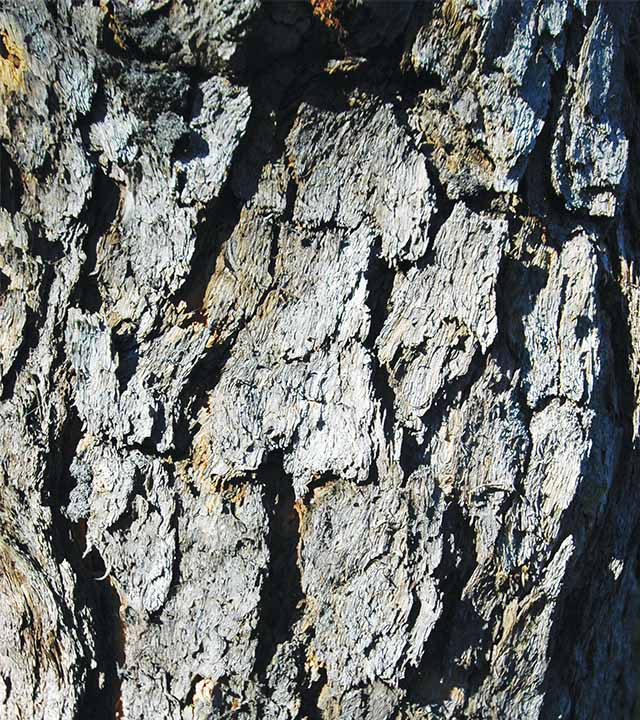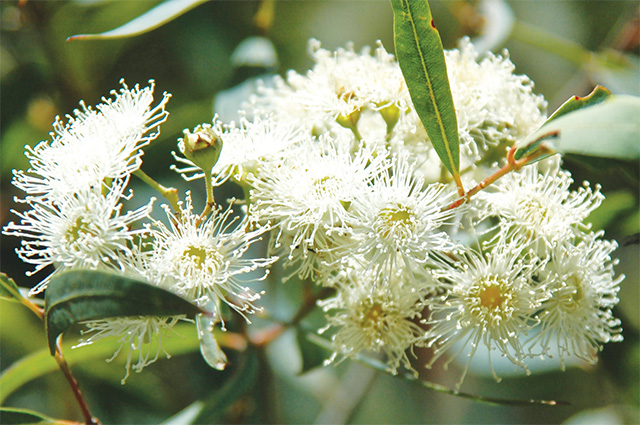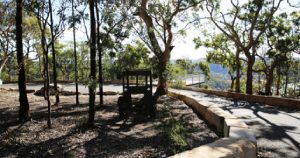One of the larger trees that can be particularly noticeable in our bushland belongs to the Eucalypt family. The Grey Ironbark (Eucalyptus paniculata) is a tall tree growing to around 35 metres tall. Its crown and spreading canopy can be covered with a mass of creamy white flowers, generally between May to January.
Its dark grey bark, which gives the tree its name, is somewhat furrowed, very rough and hard. The tree was generally widespread around the Sydney Region, being more pronounced when in company with Turpentine (Syncarpia glomulifers) trees. Both prefer a moist forest habitat, growing in good quality soils of various types.
Due to the spread of urban areas, along with exploitation for durable timber products for construction purposes, the tree is now quite rare. The Grey Ironbark is however, found in numbers in the protected forest areas of our bushland reserves.
Being such a long flowering tree which provides a profuse crop of nectar rich blossom, it is a favourite for apiarists for producing a distinctive tasting honey.
Trying to identify eucalypt trees with a similar foliage and blossom can be a difficult task, hence it is necessary to also include the type of bark in any identification process. In some grey ironbark trees the bark can be of a corky consistency with a brownish tinge rather than the usual grey colour.
The leaves are noticeably elongated (lanceolate) in shape, with a shiny upper surface, while having duller green colour on the underside.
– LACHLAN TURNER









